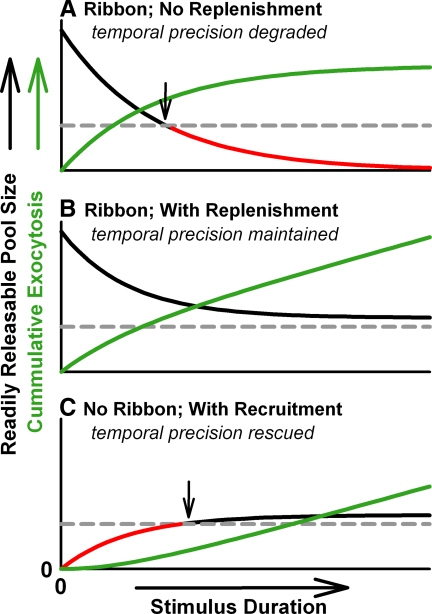FIG. 9.
Readily releasable pool depletion and temporal precision of the auditory nerve. A: readily releasable pool depletion degrades temporal precision during prolonged stimuli. Cumulative synaptic vesicle exocytosis (green line) increases during stimulation as readily releasable vesicles (black and red line) exocytose without replenishment. At stimulus onset the large readily releasable pool (black line) exceeds the minimum size required for temporal precision (gray dashed line), as defined in Fig. 6C. During prolonged stimuli the readily releasable pool is depleted below this critical size (arrow), such that it is no longer large enough to support precise timing (red line). B: rapid replenishment of the readily releasable pool curtails depletion so temporal precision is maintained. C: in the absence of a synaptic ribbon, the readily releasable pool is initially small and temporal precision is poor (red line). Stimulus-induced recruitment of vesicles to the active zone increases the size of the readily releasable pool so it is sufficiently large (arrow) to enable temporally precise responses to prolonged stimuli (black line). All traces are based on a 3-state kinetic model describing the number of readily releasable vesicles, Vrr, where Vrr is irreversibly replenished and depleted with rate constants kr and kd, respectively, and has the initial value Vrr: [1/(kr + kd)] × (dVrr/dt) + Vrr = Vrr × kr/(kr + kd).

